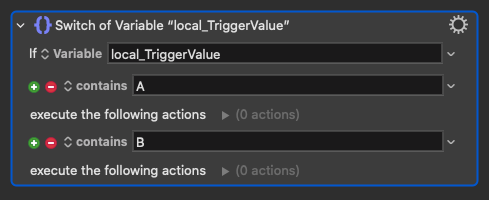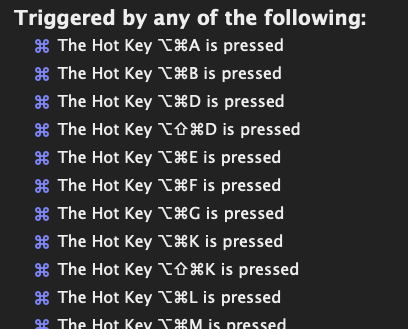Notes on Triggers
KBM allows me to have long macro names, to have long names for groups of actions, and in many other ways supports my documenting my macros so I know what I was thinking when I come back to it next week, next month, or next year.
But I haven't found an easy way to document macro triggers, except to add a comment explaining the triggers as the first action in the macro. That mostly works, except ...
Now that it is possible for a macro to test exactly how it was triggered, I have found it very useful to combine multiple, parallel, similar macros into a single macro so that it mostly does the same thing but sometimes does a variation, depending on how it was triggered. Like adding Shift or Control modifies to an existing hotkey macro for specific variations, instead of creating a dupl9cate macro that then has to be kept in sync if there are changes.
I have some macros that have over 30 different triggers, and there have been times that I wished I could simply add a short comment to remind myself what that particular trigger means.
@peternlewis, would it be hard to add a Note field next to trigger identifications?
Everyone: would you find this useful?
Add New Trigger Anywhere in the List
Also, again in those macros with ovr 30 different triggers, sometimes I have wished that I could add new triggers to the list with the same flexibility as I can add new Switch options. Right now, we can only add new triggers to the bottom of the list:

In the Switch action, we can add new options anywhere in the list that makes the most sense:

It would be useful to be able to have that same flexibility of ordering of new additions to a Trigger list as we have with a Switch list.
This is especially an issue when I am switching on the trigger value and want to add a new modifier key variation to an existing trigger. I would like to organize the trigger list and the switch list the same way, by base key, but to add a new trigger anywhere in the list other than at the end means recreating the whole list. That's painful.




